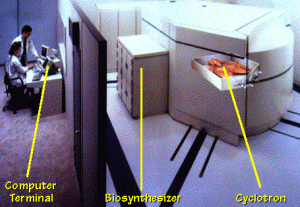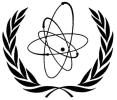The most important breakdown in the public’s understanding of nuclear power is in its concept of the dangers of radiation. Radiation consists of several types of subatomic particles, principally those called gamma rays, neutrons, electrons, and alpha particles. These particles shoot through space at very high speeds, something like 100,000 miles per second and they can easily penetrate deep inside the human body, damaging some of the biological cells of which the body is composed. This damage can cause a fatal cancer to develop, or if it occurs in reproductive cells, it can cause genetic defects in later generations of offspring.
However, through constant development in medical and nuclear science, especially in particle physics, scientists have come up with a revolutionary concept in using radiation as a mean of diagnosing and curing diseases. This in every way contradicts the basic understanding among people regarding radiation. In the medical field, scientists have been toiling endlessly to understand the behavior of radiation particles or to be more precise ionizing radiation. Once the secret of ionizing radiation is fully understood, it breaks open a whole new possibility and potential for nuclear medicine using radioactive substance.
So what exactly is nuclear medicine? Nuclear medicine uses radioactive substance which gives off ionizing radiation as they decay, to both diagnose and treat diseases. To put this subject into retrospective, in medical diagnostics using nuclear scans, a radioactive substance is injected, swallowed or breathed into the body and it gives off radiation (gamma rays) as it passes through or lodges in the body. These invisible rays can be tracked and used to produce images and doctors will then check the pictures to find for lumps or tumors as well as cancerous cells. Scans are the main use of nuclear medicine.
In treating diseases, radiotherapy is considered one of the best methods of combating cancer cells from spreading. Radioactive substance is able to stop cancers growing, and destroys cancer cells. It can be used to cure cancers or to ease a patient’s suffering. For example, thyroid cancers are treated by swallowing radioactive iodine. Doctors administer treatment using nuclear medicine because radiation damages cancer cells more than is harms normal cells. For example, heart and blood vessel examinations can be done with a thallium stress test .The thallium isotope is produced in a cyclotron, a type of particle accelerator. Iodine 123, which is primarily used to generate images of the thyroid, is also produced in a cyclotron.
The cyclotron is an accelerator of subatomic particles. It produces a large quantity of protons (heavy particles with an electrical positive charge) and gets them moving at an accelerated rate along a circular orbit, inside a chamber controlled by powerful alternating electromagnetic fields. Thus, the particles gain energy and are smashed against a target at nearly the speed of light. The isotopes produced by the cyclotron are used for body imaging.
However, there is the common misconception that X-rays and CT Scans are classified as nuclear medicine. This is not true because they are not produced from radioactive substance. X-ray images, used to diagnose disease, are similar to photographs. A normal camera records light bouncing off the surface of objects and transmits it into the camera. Because X-rays penetrate into softer objects (like bodies, or luggage), we can use them with a special camera to make pictures of the harder objects inside our bodies or our backpacks: lumps, bones, metal. X-rays are also used in curing cancers, by focusing concentrated X-Rayson the cancer site. X-rays, however, are a type of ionizing radiation. CT Scans, like X-Rays, are not classified as nuclear medicine. CT Scans use many X-Rays to create a 3-dimensional picture. They are a greater concern as the risk of cancer for the patient is greater for Cat Scans than for X-Rays.
References:
http://nuclear-news.net/information/wastes-2/draft-august-2/
http://www.lbl.gov/Publications/Currents/Archive/Aug-27-1999.html



